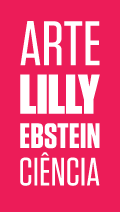The Lette-Verein School
AND THE EMANCIPATION OF WOMEN
-
 Lilly Ebstein | Clique para ver +
Lilly Ebstein | Clique para ver + -
 História | Clique para ver +
História | Clique para ver + -
 Lette-Verein | Clique para ver +
Lette-Verein | Clique para ver +
The Lette-Verein School, founded in Berlin in 1866, offered professionalizing courses for women at a time when women’s emancipation process was just beginning.
Wilhelm Adolf Lette founded the Lette-Verein School in Berlin in 1866 as an association to promote the “acquisition of skills by the female gender”. Princess Victoria, who was married to Kaiser Frederick III, was its champion. Initially, there were courses teaching women how to be teachers, housekeepers and how to make and sell products at a bazar in the school itself.
In 1872, Anna Schepeler-Lette, Wilhelm’s daughter, took over the direction of the Lette-Verein School (a name given in 1868 following Wilhelm’s death) and implemented a pioneer model of professional training [1], with technical courses such as: Commerce, Home Economics, Photography Teaching, Telegraph Operator and the School of Typographers. Courses such as Bookbinding and Metallography were later created. The following director, Elisabet Kaselowsky, who took over in 1897, built the Viktoria-Luise Platz building – where the school stands to date – with State support and inaugurated it in 1902.
Women’s education and professionalization coursed a long way until they were fully integrated to all levels of education, and faced a lot of resistance. There was unwillingness to accept women in professions such as the telegraph operator. Subsequently, the Lette-Verein also offered courses in Pedagogy, Psychology, and German language, Youth Education, Physical Education and Nursing Care.
Women’s emancipation movement began in Europe in the mid-19th Century: paid employment, civil autonomy, right to education and participation in politics. [3] “Changes in women’s status and their social expectations became obvious during the last decades of the 19th Century, although the more visible aspects of women’s emancipation was still, to a large extent, confined to middle-class women”, wrote Eric Hobsbawm [4]. Among these visible aspects, the most notable were the campaign for suffrage in favor of women’s rights to vote and the expansion of secondary education for girls.
The increase in the number of secondary schools was most pronounced in Germany: in 1910, approximately 250 thousand girls studied in secondary school. Women began enrolling at university in 1900. In 1908, with the exception of Medicine, only 103 women had graduated from universities in Germany. In 1914, there were 4,500 to 5,000 women university students in Germany, France and Italy. Women’s education became more frequent after World War I.
Lette-Verein School and Lilly Ebstein’s stories symbolize the emancipation of women from the mid-19th Century to the beginning of the 20th Century. From 1890 to 1918, Lette-Verein changed its profile from an association maintained by the member’s voluntary support to an institution recognized by the State. The creation of jobs for women in society had become an acknowledged tradition.
[1] Im Blick: Die fotografin ...aber was noch? Frauenberufe im Lette-Verein 1866-1982, de Doris Obschernitzki e Karin Weber-Andreas, Berlin, 1991. e Obschernitzki, Doris. Der Frau ihre Arbeit!. Edition Hentrich Berlin: Berlin, 1987.
[2] Obschernitzki, Doris. Der Frau ihre Arbeit!. Berlin, Edition Hentrich Berlin, 1987 e Doris Obschernitzki, Doris e Weber-Andreas, Karin. Im Blick: Die fotografin ...aber was noch? Frauenberufe im Lette-Verein 1866-1982. Berlin, 1991.
[3] Fraisse, Geneviève e Perrot, Michelle. “Introdução: Ordens e Liberdades”. In: Perrot, Michelle e Duby, George (org.). História das Mulheres. O Século XIX. Edições Afrontamento.
[4] Hobsbawm, Eric J. A Era dos Impérios 1875-1914. São Paulo, Paz e Terra, 1988, pp. 284-287.
Lilly Ebstein Lowenstein (1897-1966) led a life between science and art, drawing and taking photographs in the fields of Medicine and Zoology. In her work, Lilly combined her technical knowledge of photography and drawing, the study of the sciences and a remarkable talent for aesthetics. She was born in Germany and studied at the Lette-Verein School in Berlin from 1911 to 1914. In 1925, she immigrated with her husband and two children to São Paulo. In 1926, she became an illustrator and photomicrographer at the Illustration and Photography Department at the School of Medicine (USP, as of 1934), which she headed for thirty years after 1932. Lilly collaborated at Instituto Biológico de Defesa Agrícola e Animal (the Biological Institute for the Defense of Agriculture and Animals), from 1930 to 1935, namely in the Avian Pathology Department. A life with art dedicated to the research and dissemination of science.

